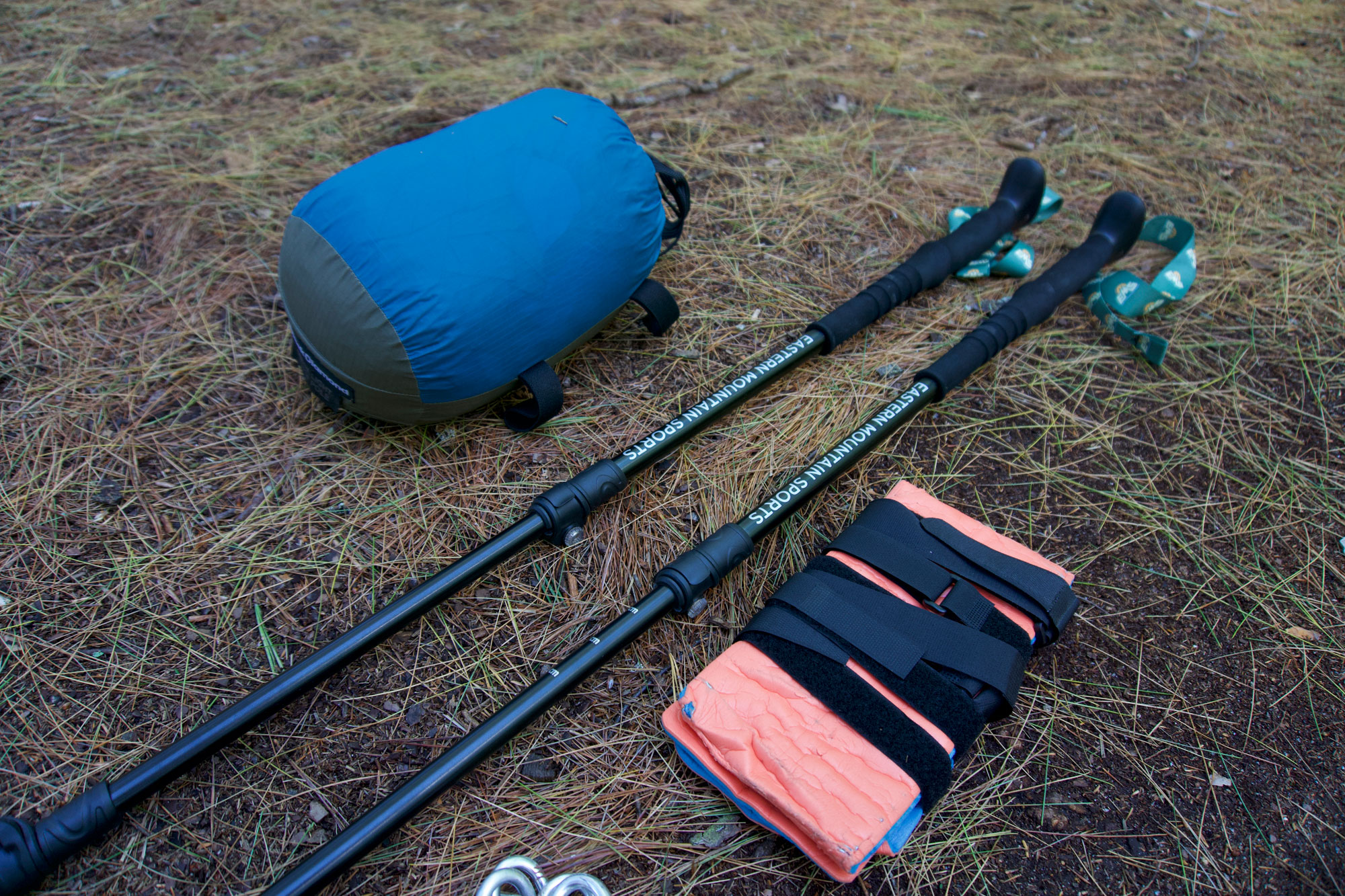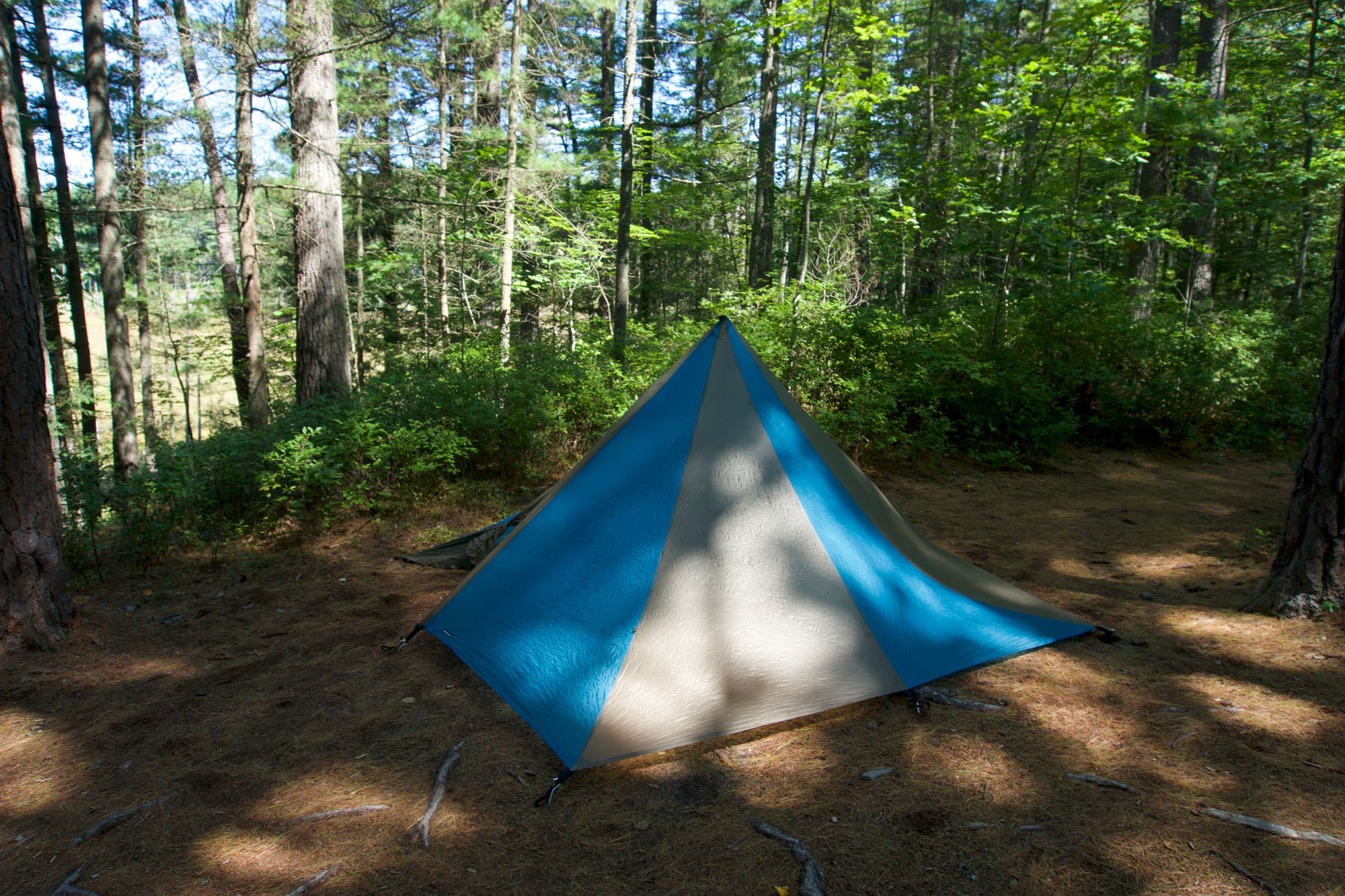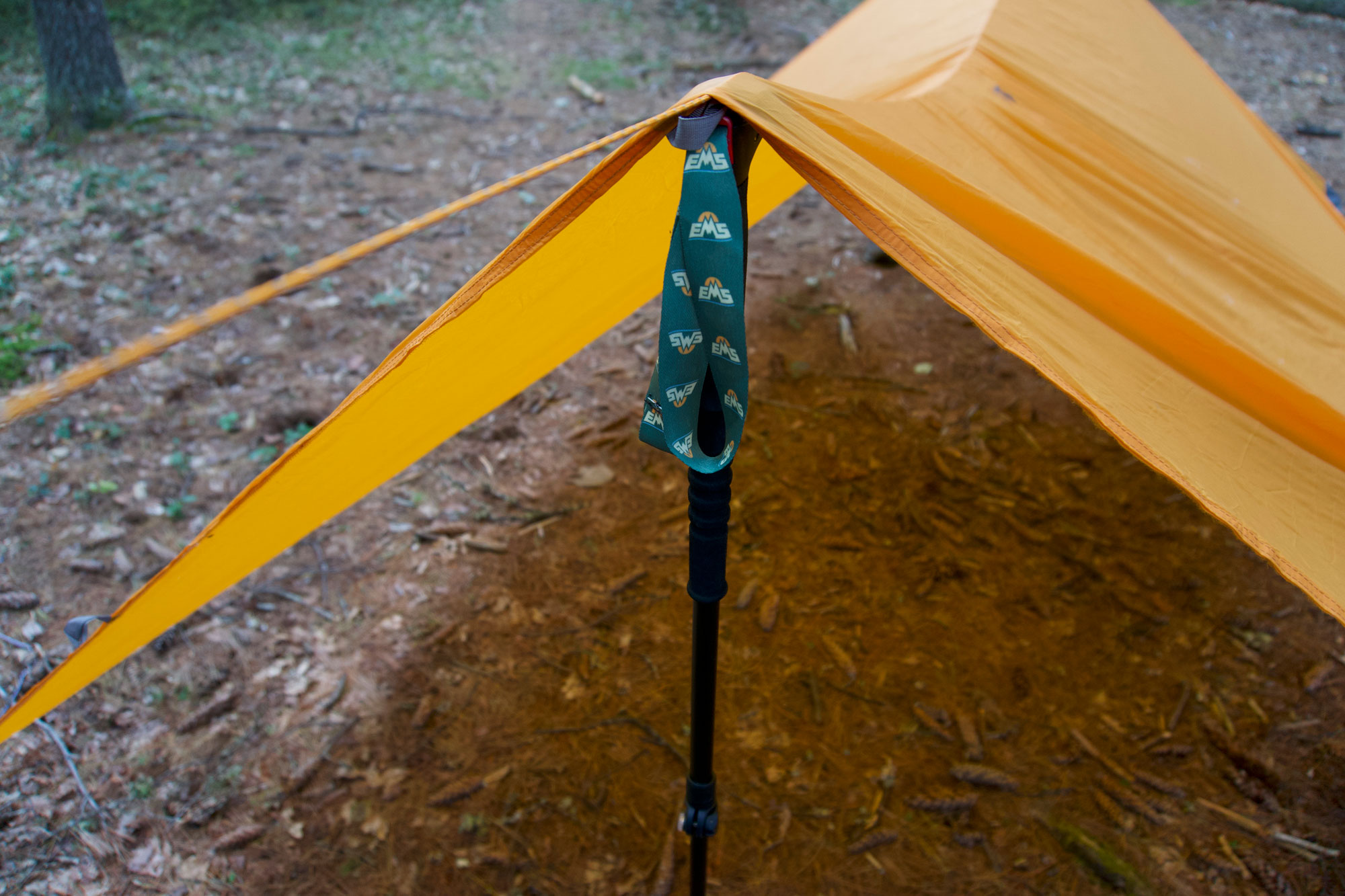Ambitious backpackers continue to whittle down pack weights and gobble up more mileage with the use of creative and increasingly specialized gear. One such piece of gear that’s helping to shrink pack size and trail time is the tarp tent—a versatile, packable, and lightweight alternative to traditional tents.
What Are Tarp Tents?
Tarp tents encompass a broad category of single-wall shelters. At one end of the spectrum is the classic tarp tent, a plastic or nylon sheet that is rigged with trekking poles and guy lines tied to trees or staked in the ground. Set up in a variety of configurations—the most common of which are an angled tarp and an A-frame setup—they are among the most lightweight shelters, especially compared to other backpacking shelters.
At the other end of the tarp-tent spectrum are shelters that are easily mistaken for traditional tents. Examples of tarp tents on this end of the spectrum include the Black Diamond Mega Light and the Hyperlite Ultamid. Some general characteristics help distinguish these tarp tents:
- They have a single wall, with a single entry point and no windows
- They are less likely to have a floor
- They are not freestanding, meaning they can’t stand up without being staked out
- They often are pitched with trekking poles instead of tent poles
- They often are shaped like a pyramid

Tarp Tents Pros
A big advantage of tarp tents is their weight and packability. While an average backpacking tent weighs several pounds and takes up a fair amount of space in a pack, especially when you include the poles, most tarp tents weigh much less (approximately one pound), compress to about the size of a 32-ounce Nalgene bottle, and are rigged with poles you’re already carrying—your trekking poles.
Another advantage of tarp tents is their space-to-weight ratio. Simply, they provide a lot of shelter with very little weight penalty. So on light-and-fast missions, a group of three can comfortably shelter under a single 9×9 tarp. Likewise, when the group size for your upcoming Pemi Trip expands at the last minute, the ability to rig a tarp tent in a way that shelters more people is a big plus, something you can’t do with a regular 2-person tent.
A further benefit of tarp tents is they don’t have to cost a lot of money. A classic tarp tent set up in A-frame style can be rigged with a basic 9×9 tarp, trekking poles you already own, 20-30 feet of paracord, and some stakes. Even a technical tarp intended for use as a shelter is substantially more affordable than most high-quality tents.

Tarp Tent Cons
Tarp tents lack a floor and are often pitched with an open side, which means they don’t offer much protection from bugs or rain. In these conditions, a traditional tent is often ideal. You can pair a bivy sack or bug net with your tarp tent for additional protection, but those add weight, bulk, cost, and erode some of the advantages offered by a tarp tent. The open configuration of a tarp tent can also invite curious critters, like the mice near the Cabot Hut. Cooking and keeping food outside of the tarp will help keep creatures away, but isn’t foolproof.
Another drawback to the open configuration of tarp tents is that they’re not as warm as traditional tents. Traditional tents trap heat inside them and their floors offer an additional barrier against the ground, which make them better-suited to cold-weather and winter camping trips.
The open sides of a tarp tent also don’t offer the same privacy as traditional tents. Some tarp tents offer more concealment than others, but don’t plan on having much privacy when under your tarp changing clothes or sleeping. For most, this is less of a big deal at secluded backcountry sites than at crowded campsites—let the trip and your level of self-consciousness guide your shelter choice.

Best Uses for Tarp Tents
Tarp tents excel in many situations. Perhaps the four most common are:
- Ultra-light backpacking shelter
- Budget-friendly backpacking shelter
- Light-and-fast missions where weight is at a premium
- Expedition camp kitchen, especially in snowy climates
Once you get familiar with tarp tenting, you’ll find them to be a go-to solution for sheltered sleeping and cooking.

What You Need to Know About Tarp Tents
Setting up a quality tarp tent is a skill. If you’re new to the tarp tent game, here are a few tips for a quality setup.
- Rigging a tarp tent often requires being able to get the stakes into the ground. This can be hard in soils that are compact or very rocky. Pack a small hammer (weight penalty) or find a good rock to use as one.
- Getting the right amount of tension on guy lines is essential for the solid setup of a classic tarp tent and is often tricky. Before your next trip, practice the trucker’s hitch for tensioning and then securing your lines. Even better—practice the entire setup at home, so you’re not doing it for the first time in the middle of something like the Carter Range Traverse.
- Using two connected trekking poles instead of a dedicated tent pole to rig a tarp tent is a great way to cut weight. Just remember to pack the gear needed to connect poles, like a dedicated sleeve or Velcro straps, and not to extend the poles past a position of strength. One other thing to remember: if you’re using the tent as a backcountry base camp on a multi-day outing, it’s worth bringing the dedicated tent pole, otherwise you’ll lose the use of your trekking poles when your tent is set up.
- If possible, pitch your tarp tent in a sheltered area, with the opening facing away from the prevailing wind. Using terrain to your advantage can help mitigate tarp tent weaknesses from unexpected inclement weather.
Do you have a favorite tarp tent setup or rigging tip? Tell us about it in the comments!
Tim Peck and Doug Martland
Tim and Doug met long ago at the Eastern Mountain Sports in Canton, Massachusetts. Bonding over a love of slick Quincy Quarry granite, White Mountain sufferfests, and scheming up adventures while folding tee-shirts, today Tim and Doug collaborate to write about their favorite outdoor activities and occasionally get nostalgic about tee-shirt tables.




